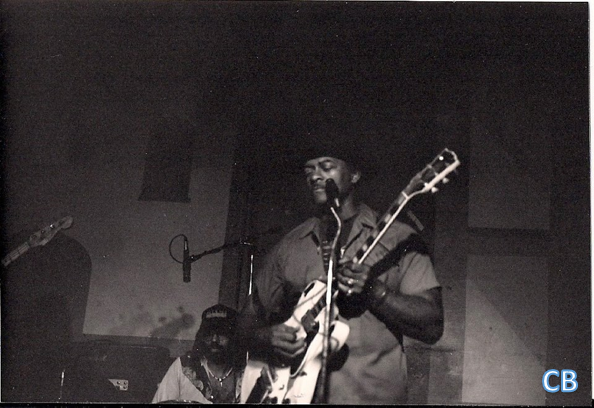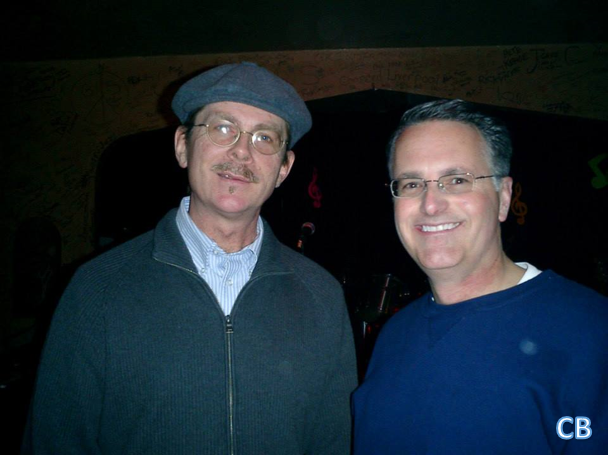Essential Blues Recording
Jimmy Dawkins – A West Side Chicago Blues Master Roars
Jimmy Dawkins – Fast Fingers – Delmark Records DD-623
A whole host of young, brash, west side Chicago blues guitarists revealed themselves to the world in the late 1950s. Their’s was a more red-hot, flowingly free-form, even jazz-inspired, crash of sound that may also have included full horn sections. It was an interpretation of the Chicago blues updated to reflect the sense of the urgency and insistence that were parts of the day-to-day existence on Chicago’s west side. It was loud, it was driving, and it was a move away from the country blues origins of the Chicago blues to that point. The west side Chicago blues brayed and hollered its burdens to the world; it imitated the pressures of Chicago life for west side blacks. It was a necessary new reading of blues.
If one is a blues fan, the names will be familiar; Mighty Joe Young, Magic Sam, Buddy Guy, Otis Rush, Freddie King, Luther Allison, and Jimmy Dawkins. And certainly, the list of vital west side Chicago blues artists does not stop here. But, one of the most singular west side Chicago blues guitarists to emerge was Jimmy Dawkins, a man of introspection and deep feelings, and unquestionably one of the finest practitioners of the new west side Chicago blues to emerge.
Culled from two separate session in late 1968 and early 1969, Fast Fingers was Dawkins’ first full-length album. The opportunity arose from fellow Delmark label Chicago blues guitarist Magic Sam’s insistence to label owner Bob Koester that Dawkins’ blues needed to be heard by a wider audience. Delmark had already turned the corner on recording what Koester referred to as modern blues, so with the endorsement from Magic Sam, coupled with Koester’s willingness to move forward in the modern blues realm, Dawkins was brought into the studio.
Dawkins was wise to assemble the group of Chicago blues peers featured on this collection that obviously understood his blues vision and aspirations. And what a collective whole it was! Providing Dawkins support were Chicago blues saxophone great, Eddie Shaw, legendary Chicago blues keyboard man, Lafayette Leake, stellar Chicago blues guitarist (and also a Delmark label artist), Mighty Joe Young, along with Lester Dorsie supplying percussion support, and both Joe Harper and Ernest Gatewood offering the low end with their bass handiwork.
As mentioned, Dawkins was a man of deep convictions and demeanor. Not that he was a staid, unfeeling fixture on the bandstand, but he was not one to posture and contort himself in order to please a crowd and get his blues points across. Rather, the sheer power that resonated from Dawkins’ guitar was awe-inspiring and made his themes effectively known. He used sustain to great effect, and was able to wring emotionality from each note he sought. Passages soar and lift the listener to the intended blues message. Dawkins’ guitar moaned and rang with dark, brooding notes, carried for long influence by his aforementioned use of sustain, or it spewed stinging, sudden scatterings of vibrant staccato embellishments. However, and this is important, Dawkins always knew the high value of a void, meaning the correct space of silence where tension and meaning can be understood via a momentary pause. His insistency and urgency were always in play, as it is here on this seminal collection, but how he gets those outlooks across is constantly of great intrigue. Dawkins work here is, in some respects, a sonic onslaught as defined via the new west side Chicago blues architecture.
The driving, hard-charging west side Chicago blues on exhibition here contains so very much soul and feeling, and even the instrumentals meld into a collective blues stew of controlled blues depth. It is interesting that Dawkins’ instrumentals bring to mind those of Freddie King via certain passages.
The work of the selected sidemen is ideally utilized to Dawkins’ best advantages. Leake’s fills and runs satisfy with their economy; never in-your-face, but always teeming with the perfect substance. Mighty Joe Young feeds tasteful accompaniment into the mix, supremely reinforcing Dawkins’ blues desires. Eddie Shaw delivers never-intrusive mood-developing layered textures into the blend, pushing the dealings forward via his broad understanding of true band dynamics.
Simply, there is a great deal of soul and feeling arising from Dawkins’ labors here. The soaring, lifting passages detail the black west side Chicago life flawlessly with all its newfound pace and pressures. To be sure, Dawkins can deal with dark, self-critical themes he has authored, yet his melancholic vocals and awe-inspiring blues guitar runs and ornamentations both afford an understanding into his west side Chicago world, but also offer him an outlet for those inherent frustrations of his life and times.
Bill Dahl, the fine music writer and critic, and I must necessarily disagree on one of his points regarding Dawkins. Dahl feels that after Dawkins’ 1971 Delmark follow-up album, Blisterstring, his work going forward did not have the depth and intensity found on his first two Delmark albums until a release in 1991, a whole 20 years later. From my perspective, Dawkins remained a bluesman of high-regard who never “dialed-it-in”, either in performance or via a recording. His blues stew continued to simmer with his always-socially-aware realizations, and they were reflected in his continually-smoldering stage submissions.
In the late 1980s, Dawkins played Mishawaka, IN’s Center Street Blues Café. Dawkins was unlike any other artist to that point who had played the club. Again, he wasn’t prone to theatrics and stage buffoonery, and I’m not sure that the assembled crowd knew how to take Dawkins’ delivery. But, it was a master class of the west side Chicago blues from one of the genre’s greats, a legendary Chicago bluesman who was there when it all broke loose. Dawkins’ performance from that evening still plays favorably in my mind.
Billy Flynn, the noted blues guitar ace, toured with Dawkins for a while. I remember one time in conversation with Flynn, an acquaintance of mine, him indicating to me how much he learned about blues guitar, and blues in general, from those times spent with Dawkins.
Dawkins roars here on his freshman Delmark label endeavor, and this is a textbook full of lessons on west side Chicago blues. It should have its rightful place in any blues collection of substance. Without qualification, it comes absolutely and completely recommended.





